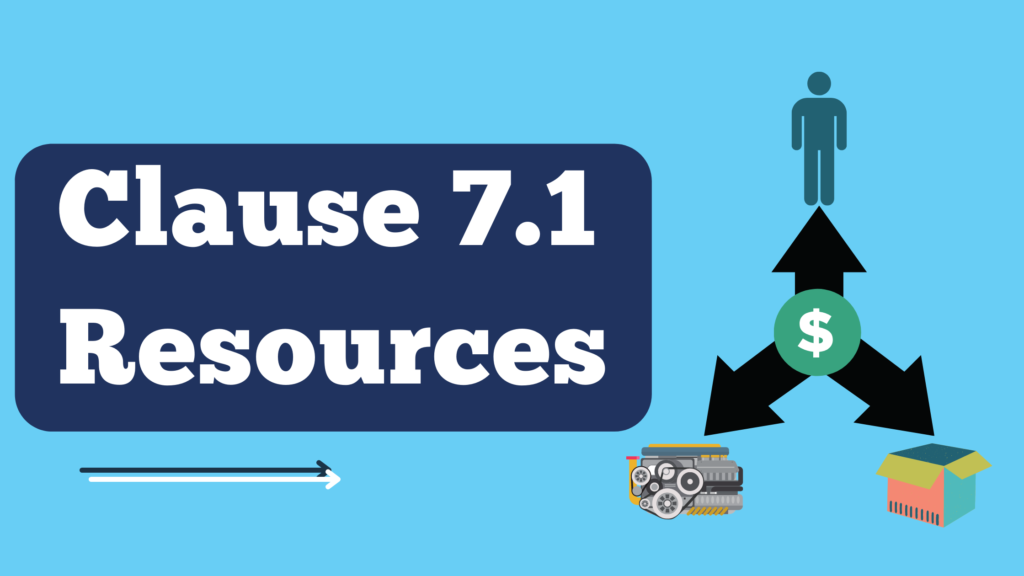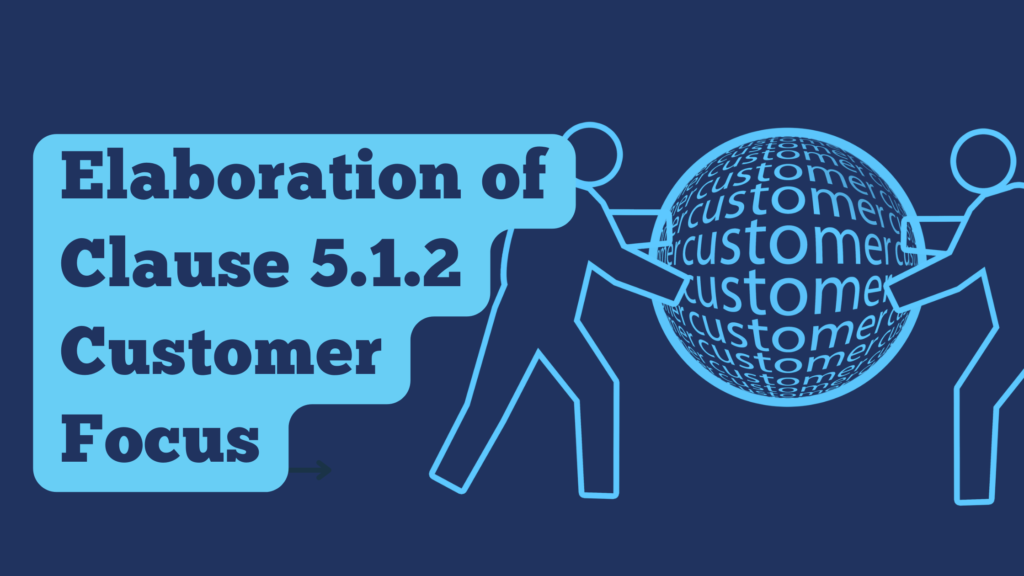Clause 7.1 Resources

Clause 7.1 focuses on resources, every company needs resources and without resources, systems cannot withstand and can easily fail.
There are several kinds of resources that are required by an organization, like:
- Financial resources
- Humans resources
- Infrastructure
- Equipment machinery
- Technical knowledge
- Raw material
In clause 7.1 resources, all these are covered:
- General – 7.1.1
- People – 7.1.2
- Infrastructure – 7.1.3
- Environment for the operation of processes – 7.1.4
- Monitoring and measurement resources – 7.1.5
- Organizational Knowledge – 7.1.6
Clause 7.1 Resources > Clause 7.1.1 – General
In this article, we are going to learn about all of these resources one by one.
So let’s start with what the standard has described in General Clause 7.1.1. In this clause, the standard has described that “organizational has to determine the resources which are required to complete following tasks”
- Establishment
- Implementation
- Maintenance
- Continual improvement
This is very broad, obviously, because this is the general clause, however, it will become specific in the next clauses.
So here we can see that it is the responsibility of the organization to determine all those resources which are required to establish, implement, maintenance, and continual improvement of the quality management system. Here are some of the examples of what can be those resources:
- Establishment: organization basic structure, technical knowledge,
- Implementation: HR, finances, machines, raw materials, infrastructure
- Maintenance: Monitoring mechanism, resources for keeping the system intact, resources and knowledge for machines and infrastructure maintenance
- Continual improvement: Finances for making updates in the system
The list of the resources required can be extended but here we have given some examples only for the sake of understanding
Internal and external resources – Clause 7.1 Resources
Moreover, two more things must be kept in mind during the identification of resources other than what we have described above:
- Internal resources – what are the capabilities and limitations of internal resources.
- External providers – what need to be obtained from them, either through outsourcing or through procurement
We can summarize the above as; there are some resources an organization can provide internally, and there are some which have to be taken from external providers. Now it is the responsibility of the organization to first; identify all the resources and secondly, to check which of them are internal and which must be outsourced.
This is because outsourced procedures are those over which organizations usually have low control as compared to internal. That’s why they must be focused!
Documented Evidence for Clause 7.1 Resources
As an auditor: Being an auditor you have to verify if the organization has done its job in order to identify the resources, definitely, there must be a document or record for that. You can verify this from, the minutes of the meeting of the management review meeting, or if there is any list maintained for outsourced jobs organizations had to carry.
As a company: You have to allocate of resources according to your planning and maintain some records according to it.



